“Establishment of ‘Redlands’ leucaena pasture is the key to converting poor quality coastal breeding properties into highly profitable fattening enterprises”.
These are the words of retired University of Queensland Associate Professor Dr Max Shelton following a recent visit to the region.
He says he is more convinced than ever that the answers to low productivity of the poorer fertility soils along the coastal belt of Queensland, are plain for all to see.
Dr Shelton has spent a lifetime researching and studying tropical pastures all around the world. He has been associated with many programs over the years in numerous different countries advancing pasture systems that help lift farming families and communities in third world countries out of poverty.
But the one that lies closest to his heart is the leucaena story and what he has seen it achieve in so many areas.
From the cut and carry systems in Eastern Indonesia where local farmers feed 2-4 cattle on 1 ha of leucaena to the large areas of Central Queensland where thousands of hectares have been planted on single properties, Dr Shelton has experienced it all. The one common theme across the globe is that those farmers who had good stands of established leucaena and managed them well, were all in open admiration of what the plant added to their business profitability.
The development of ‘Redlands’ leucaena
The one area where uptake of leucaena is being held back is the extensive higher rainfall and humidity areas (>800 mm) of coastal Queensland.
A sap sucking psyllid that attacks the fresh growth tips, severely impacts productivity, in the autumn months in particular, of all existing commercial varieties. Realising the problem early, and with encouragement from northern producers such as Greg Brown and DPI extension agronomists Bernie English and Jim Kernot, and the financial backing of MLA; Max and colleagues Drs Scott Dalzell and Chris Lambrides at UQ took on the challenge to breed a new variety that was has a high level of resistance to the psyllid insect.
Many years of hard slog and setbacks finally led to the release of ‘Redlands’ onto the market in 2015. The availability of a psyllid-resistant variety increases the range of adaptation of leucaena by 30%, from 4.4 M ha to 5.7 M ha, largely in the coastal zone of Queensland and monsoonal northern Australia where large numbers of cattle are grazed on poor quality grass pastures.
Early results of producers who planted ‘Redlands’
It took some time for the selected seed producers to grow and then harvest enough seed to satisfy those who had eagerly awaited its arrival. Now with commercial paddocks that are 3 years of age, the results are up there for all to see. The same high weight gains are being achieved as from the other varieties in the Central Highlands.
Dotted right along the east coast from Tully to Gympie, commercial plots of ‘Redlands’ are being established. Hundreds of hectares, some of it under tickle tape, in the Whitsunday Shire have shown weight gains and carrying capacities that exceed industry norms. ‘Redlands’ has been successfully established on Goshen Station south of Mt Garnett; at Swans Lagoon south of Townsville under irrigation; and right down the coast with areas being planted in the Gin Gin and Bundaberg regions.
Max was especially impressed with results being achieved on ‘Fairview’ located just north of Calliope. ‘Redlands’ has been successfully established on gravelly ironbark and bloodwood ridge country and nearby flats which have poorly drained infertile soils with a clay layer at shallow depth. These are soils not normally suited to leucaena. A key to their success is the use of new planting techniques. After trial and error with poor early seedling vigour after planting, leucaena is being planted on 60 cm raised banks on the contour spaced approximately 10 m apart. Growth on these banks has been excellent due to several factors:-
- Drainage is improved on these shallow soils.
- Depth and fertility of soil available for root development are improved.
- Fertility is further improved by applying phosphorus based fertilizer to the raised banks.
- Moisture availability is improved on the sloping ridges as overland water flow is captured by the banks.
- Seed is planted shallow (at 2 cm depth) and into the dry soil on top of the banks, germinating only when adequate planting rain is received.
- Herbicide is used to control weeds.
- Around 1 month after planting the leucaena, grasses are planted in the inter-rows (signal grass, and sometimes Rhodes grass) at a high rate. The inter-row grasses will need to be regularly fertilized.
Are changes to established leucaena production system needed for success in coastal country?
Dr Shelton used his long experience to make a number of observations and suggestions fpr graziers wishing to establish ‘Redlands’ in higher rainfall areas:
- “The area planted so far is just a drop in the ocean of the extensive area that has soils which we now know are suitable.”
- “The increase in production that can be achieved on forest country is nothing short of eye watering. We are not talking about 20-50% increases here we are talking about possibly quadrupling productivity and profitability from established ‘Redlands’ pastures. We know we can achieve 250 kgs per animal per year, when they have access to leucaena year round, compared to just 120 kg per animal on native spear grass/wire grass pastures. In a backgrounding scenario, we can expect a corresponding doubling of carry capacity from 1.2 ha to 0.6 ha per grower on creek flats and a little less on ridge country. Thus a liveweight gain of 300 – 400 kgs per hectare is very attainable. Times that by what animals are worth, presently $5 plus, and there is a gross return of $1500 – 2000 a hectare”.
- “The increased value of land improved with ‘Redlands’ is another significant benefit.”
Unfortunately, despite ‘Redlands’ being a highly productive pasture system, adoption lags way behind potential. What are the possible reasons? For starters, leucaena plantings in this coastal environment will need intensive management:
- To counter water logging and low fertility on shallow soils, it has been demonstrated that establishment is best on fertilized raised banks for the reasons previously described.
- Fertiliser, particularly phosphorus, will be required and deep placement is preferable. The roots can only access the P while they are growing actively with adequate moisture. Sulphur is another crucial element in many soils particularly on red soils.
- Regular cutting (either yearly or every second year) to manage excess woody growth will be necessary. We know that leucaena responds well to intensive rotational grazing, however, when growing in the higher rainfall areas, regular cutting will also be required to contain excess woody growth. Cutting not only removes all of that wasted wood that requires energy to maintain, but also promotes high quality leafy regrowth that cattle can more readily access.
Another huge advantage of regular cutting, is that it stops the production of seed, greatly lessening the threat of it spreading into areas where it is not wanted. Given the widespread concern about increased coastal weediness from the planting of ‘Redlands’, regular cutting will allay these fears.
Yet another benefit of establishing leucaena pastures is the chance to market carbon neutral beef due to the high carbon sequestration and mitigation potential of leucaena. Every cutting of excess wood equates to a top-dressing of soil carbon reserves, and leucaena leaf contains secondary plant compounds that reduce enteric methane emissions. The high profitability of intensively managed ‘Redlands’ leucaena also leaves open the option of destocking steep and marginal grazing lands for native tree regrowth to produce carbon offsets.
Dr Shelton summarises by emphasising that the extra management input required when planting “Redlands’ leucaena will be handsomely rewarded by excellent profitability, increased land value of properties, opportunity to produce carbon neutral beef, and the chance to almost eliminate the threat of weediness.

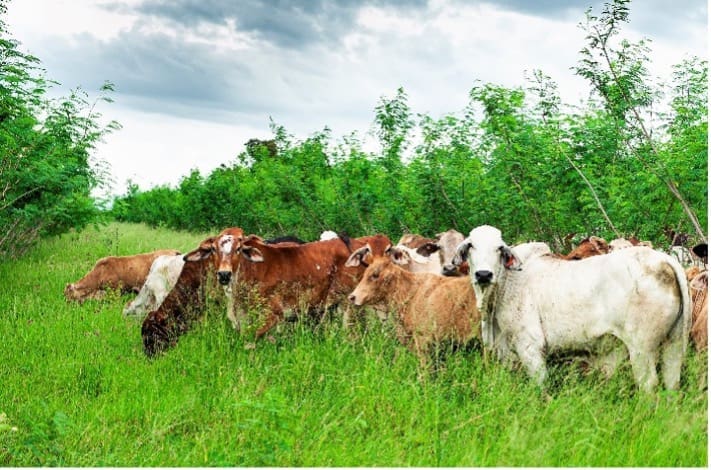
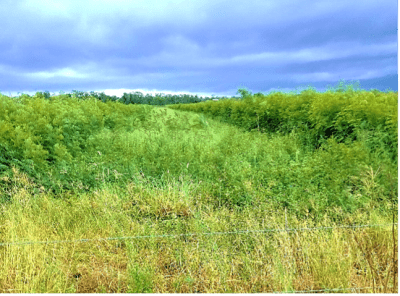
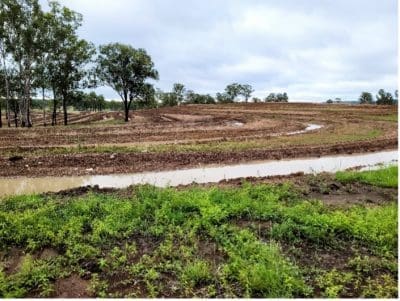
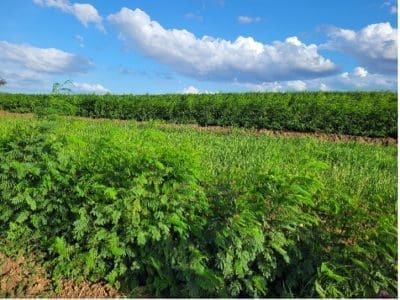
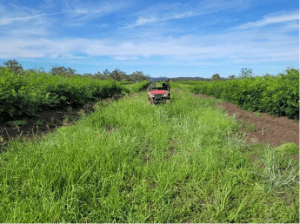
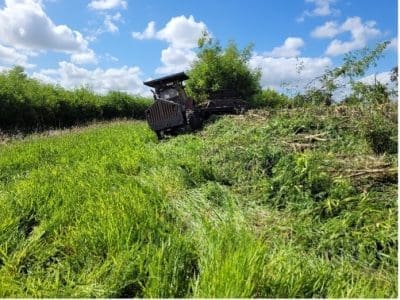
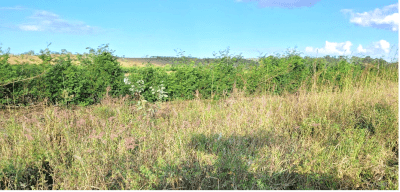
I am on the coast at Seaforth need help in obtaining Redlands seed can you help me please
I would like to find out more info about the Redlands Leucaena.
Would like support in seed access and set-up planting ect. Thanks
Dear Craig,
Feel free to contact me. I can help you with suggestions about sourcing ‘Redlands’ seed and advice concerning establishment and management of the variety.
Kind regards,
Max Shelton
Assoc. Prof. (Hon)
University of Qld.
m.shelton@uq.edu.au
Hi I would like to find out more info about the Redlands Leucaena. Would like support in seed access and setup ect. Thanks Craig